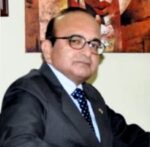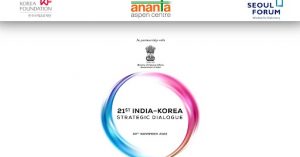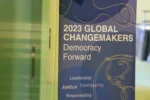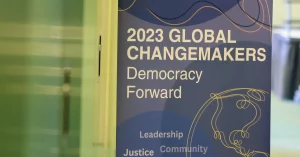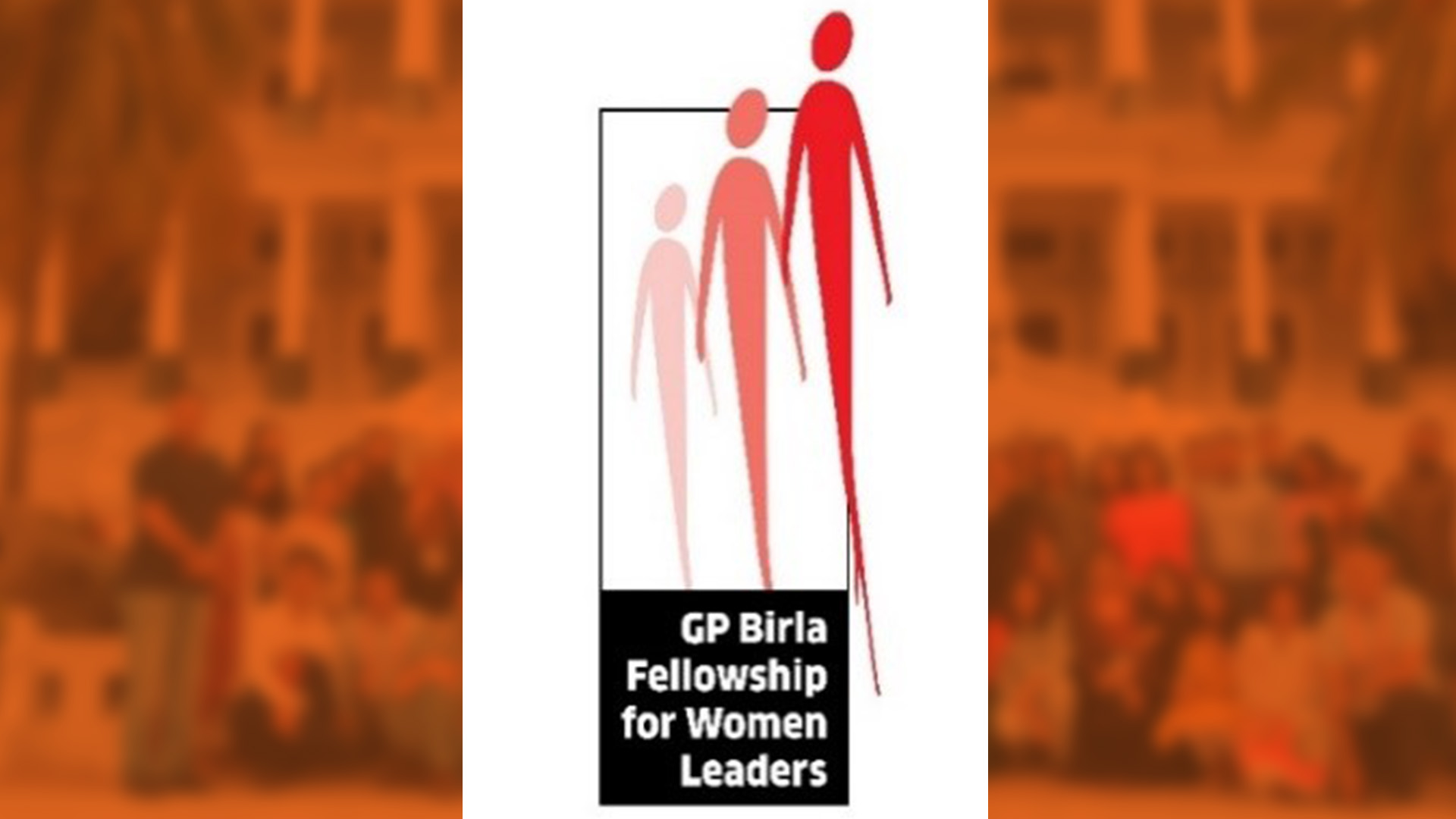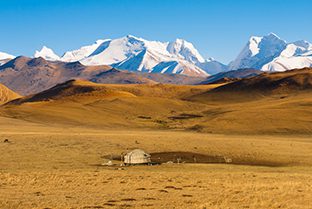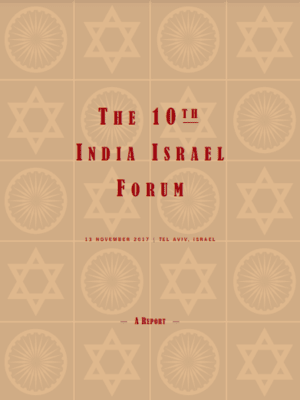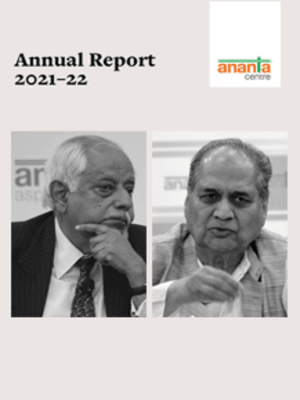I) Political Developments
Unrest in Iraq and Lebanon: Arab Spring 2?
During much of October 2019, Lebanon and Iraq were both convulsed by widespread anti-establishment demonstrations led by their youth. These popular manifestations railed against the perceived hijacking of the popular mandate by powerful interest groups such as militias and sectarian entities in each of these two countries. They blamed them for mis-governance and corruption and demanded their ouster and a systemic overhaul.
Resignation of Lebanese PM Hariri:
Since mid-October, Lebanon was convulsed by nation-wide demonstrations triggered by public opprobrium at unpopular measures imposed under the negotiated terms of an $11 billion loan from IMF and other lenders. Initially the demonstrators, non-sectarian and apolitical, demanded withdrawal of a $6 monthly tax on Whatsapp subscription, but later their demands expanded to include anti-corruption measures and replacement of the current confession-based polity and new elections on non-sectarian basis. Relevant to note that even as Lebanon is notionally a liberal democracy, the country’s national covenant has long ascribed important political offices on sectarian basis to co-opt various sects into the polity. While this has ensured their inclusion into the mainstream, it has also bred parochialism, inbreeding and corruption. The country’s foreign debt is put at over 150% of its GDP.
The demonstrations – resembling the “Arab Spring” earlier in this decade – were led mostly by the youth and called for a “Thoura” or revolutionary change. The phenomenon manifested in peaceful blockading of the road and highways persisted through the month without being either appeased by token concessions or allegations of external incitement by usual suspects. The national army, the only non-controverted official organ was asked to remove the demonstrators and their barricades, but acted in a non-aggressive manner. Continued and intensified protests forced powerful sectarian heads, such as Hezbollah’s Hassan Nasrallah to realign themselves to offer some equivocal support to the demonstrators’ demands.
In the event, Prime Minister Sa’ad al-Hariri tendered his resignation on October 29 after a part of his cabinet quit. He was asked by President Michael Aoun to continue in caretaker capacity. As the national covenant prescribes Prime Minister to be a Sunni Muslim, chances of Mr al-Hariri being asked to form a new government cannot be ruled out. In an national address on October 31, President Aoun hinted at the need to replace the current confession-based political arrangement with a system more representative of the wider public mandate without laying down any roadmap.
First ever non-sectarian popular demonstrations have pushed Lebanon into an uncharted territory. The country remains intrinsically fragile and divided after long civil war (1975-90). Political shadow-boxing in the country by foreign players such as Iran, Israel, Saudi Arabia, Syria and France, deeply entrenched and powerful militias as well as ongoing intense civil war in neighbouring Syria have led the observers to dust-up their worst case scenarios for Lebanon, which has long suffered being a theatre for various regional proxy-wars.
Unrest in Iraq leads to Bloody Stalemate:
Similar anti-government demonstrations have also rocked Iraq since October 1 with the youth frustrated by high unemployment and poor governance despite the record earnings from oil exports. They pointed out that although the government led by Prime Minister Adil Abdul Mahdi has been in power for an year since last elections, it has not taken any tangible steps to reconstruct the country devastated by bitter struggle against Islamic State that was defeated over two years ago. They also vented anger against rampant armed militias, official corruption and perceived Iranian hegemony. They demanded resignation of the current government and fresh elections under international supervision.
While initial demonstrations remain non-violent and apolitical, these soon faced repression including live gunfire by police, army and the various pro-government militias leading to over 250 deaths in escalating cycle of violence till end of the month. Angry demonstrators indulged in widespread arson and destruction of property belonging to government sympathisers and pro-Iranian establishments. Crucially, by the end of the month, the powerful leaders of Shia clergy such as Moqtda al-Sadr and Ayatullah Sistani veered around to conceding support to the demonstrations. Eventually, Iraqi President Barham Salih stated on October 31 that the Prime Minister Abdul Mehdi was willing to resign “provided a substitute could be found”.
Comments:
While the demonstration in Lebanon and Iraq had common elements, they were mutually independent. Similarly, the two governments also responded progressively in similar manner: first living in denial, accusing them of being externally choreographed, making some palliative concessions and finally showing some cracks in the ruling cliques.
The underlying causes for protests were real and the public articulation of these frustrations by demonstrators was not new. Their persistence, cross-country spread and non-political or sectarian basis was, nevertheless, surprising. At the same time, their spontaneity, lack of hierarchy or leadership and ever-shifting agenda made it difficult to see the demonstrators coalescing into formal negotiators. This made it difficult to predict the endgame.
In past decade, such protests under the rubric “Arab Spring” in countries such as Tunisia, Egypt, Libya, Yemen, Algeria and Sudan have succeeded in toppling the incumbent regimes, but largely failed to herald basic changes sought either politically or socio-economically. As October ended the situation was still fluid.
While the protests were non-sectarian, they were by nature against the establishment dominated in both countries by different Shia groupings and militias having symbiotic ties with Iran. Consequently, the protests if successful may abridge Tehran’s influence over their politico-religious disposition.
“Operation Peace Spring”: Turkey Addles the Witches Brew in Syria:
For nearly two years, Ankara has been expressing its growing concern at growing military influence of Syrian Democratic Forces (SDF) led by Kurdish militia YGP in north eastern Syria bordering Turkey. Ankara regards YGP as a terrorist outfit allied to Turkey’s own Kurdish Workers Party (PKK) that has waged a separatist campaign of terrorism inside the country. However, Ankara’s alarm was ignored by the US which equipped and assisted the SDF to destroy the “Islamic State” in Syria. This, in turn, made Turkey more bellicose in protecting her south-eastern border by a military operation titled “Peace Spring” on October 11 aimed at creating a 480 kms long and 31 kms wide “Safe Zone” inside Syria. According to Turkish President Ergogan, this zone was needed to physically secure his country and to resettle some of the 3.6 million Syrian refugees living in Turkey back in their own country. Imminent military campaign by Turkey, with NATO’s second largest armed force, against the US allied SDF/YGP, put Washington on the horns of a pernicious dilemma. President Trump failed to persuade his Turkish counterpart to call off his military campaign. He ordered withdrawal of the US armed personnel in the likely combat zone, thereby abandoning the SDF/YGP. He sent Vice President Pence to Ankara to secure a five day ceasefire to allow an orderly withdrawal of SDF/YGP units. Smarting under allegations in the Congress about betraying Syrian Kurds, Trump administration imposed a number of largely symbolic sanctions on Turkey for its military incursion into Syria.
The “Operation Peace Spring” caused a profound geo-strategic realignment in the region. After perceived US betrayal, the SDF/YGP quickly realigned itself with President Bashar al-Assad’s government affording the latter their first opportunity to enter north eastern Syria in five years. On her part, Turkey got closer to Russia and after a bilateral Summit (Sochi; Oct 22), President Erdogan declared that Turkey and Russia shall undertake joint military patrols in the proposed safe zone. The US policy turned a full circle when President Trump claimed that Operation Peace Spring had concluded and lifted the US sanctions on Turkey. He, however, partially reversed the decision to withdraw the US forces from Syria by redeploying them to al-Hasaka oil fields to prevent them from falling into hostile hands.
Comments:
Please see: https://www.thehindu.com/opinion/op-ed/a-turkish-misadventure/article29683319.ece
Russian President Visits KSA and UAE:
In a significant move intended to expand Moscow’s engagement in the Middle East, Russian President Vladimir Putin visited Saudi Arabia and the United Arab Emirates on Oct 14 and 15 respectively. The two Gulf countries, regarded as traditional allies of the United States, saw no contradiction in warming up to Russia, with resurgent influence in the region. The visits led to discussions on OPEC+ arrangement to which Russia is a major party, supply of defence equipment and mutual investments.
Comment:
While KSA and the UAE have basic differences with Russia over a number of regional issues, such as Syria and Iran, they have common interest in shoring up the oil market and curbing spread of radical Islam. Moreover, Russia committing their defence forces and political heft to shore up Syrian President Bashar al-Assad appear to have impressed the regional powers about Moscow’s reliability as a strategic partner.
Killing ‘The Ghost’: The US Assassinates Daesh Leader:
On October 27 President Trump announced that American special forces has killed Abu Bakr al-Baghdadi (real Name: Ibrahim Awad Al-Samarrai), founder-leader and self-proclaimed Caliph of Islamic State in Iraq and Syria (ISIS) in Idlib area of Syria in a safe zone nominally under Turkish control. Four days later ISIS (also called Daesh in Arabic) acknowledged the death, threatened revenge and announced Abu Ibrahim al-Hashimi al-Quraishi as his successor.
Comments:
The deceased leader was almost singlehandedly instrumental in creating Daesh in June 2014 from core group of erstwhile Iraqi army, imbuing it with a spectacular religio-political aura that attracted the Jihadis from beyond Islamic world and methodically sustained his proto-state for nearly five years. He, however, was rarely seen or heard and – despite being a theologian – had virtually no associated personality cult beyond adopting the name of the first Caliph. This context makes it difficult to assess his precise role in Daesh as well as the impact of his departure on the core militant outfit which represented a macabre and self-defeating version of Sunni sect.
During past five years, franchises of Daesh surfaced in different corners of the Islamic world – from Sahel to Khorasan and from Western Europe to Philippines. While they declared their allegiance to the Caliphate, they mostly acted autonomously. In many cases, their militant activities often eclipsed earlier outfits including al-Qaeda branches. Most observers, therefore, believe that decapitating the Caliphate would be a serious setback to Daesh in its killing fields of Iraq and Syria; they, nevertheless, expect Daesh franchises would continue their business as usual for the foreseeable future.
Elections in Tunisia:
Tunisians went for elections twice during the month. Parliamentary elections on October 6 and Presidential elections a week later. They produced mandates which were similar, but nuanced. Presidential elections were decisively won by Kais Saied, a left of centre anti-corruption activist against Nabil Karoui, a populist businessman serving a sentence for financial irregularities. The parliamentary elections produced a hung verdict with front runner moderate Islamic Ennahda party getting less than a fourth of total seats. With over twenty parties in the fray, composing a ruling coalition would be hard and it may still not break the political stalemate that Tunisia has had since the Arab Spring commenced in 2011. So, despite a reasonably peaceful and orderly elections, the Tunisians may have to continue hoping for political stability and faster economic growth.
…………………………………………………………………………………………………
II) Economic Developments
Saudi Aramco IPO and Kingdom’s Economic Health:
By end of October, there were tentative signs of final go ahead being given to Saudi Aramco, world’s largest commercial establishment, to issue an Initial Public Offering (IPO). The state-owned company which produces nearly a tenth of world’s hydrocarbons (13.6 mbpd of oil equivalent in 2018) has been planning for an IPO since 2016, but this has been repeated postponed as it sought valuation of two trillion dollars, a figure many investors balked at during an era of moderate oil prices and stagnant demand. Moreover, issues such as need for greater transparency in financial and governance matters were also raised. Additionally, the drone attacks in September which temporarily knocked off half of Aramco exports raised the issue of security. Their speedy restoration and more realistic valuation at $1.5 trillion facilitated early restoration of the IPO process which is expected to commence early November with around 2% of Aramco being offered at the Kingdom’s Tadawul Stock Market for domestic investors. If as planned, around 5% of Saudi Aramco or $75 billion is offered later to international investors, it would be world’s largest IPO ever issued.
Comments:
Issuance of Saudi Aramco IPO has been central to Crown Prince Mohammed bin Salman’s Vision 2030 aimed at modernising the Kingdom’s economy and reduce the dependence on hydrocarbon sector. It may eventually convert a Saudi crown jewel into a global enterprise.
The proposed IPO is likely to create multiple records in global finance and reorder the corporate governance in Saudi Arabian economy. Even the lower valuation of the company at $1.5 tr is far above next level (of Amazon, Microsoft and Apple) which have sometimes crossed $1 tr. Similarly, Saudi Aramco was world’s most profitable company with its EBITDA of $224 bn in 2018 being larger than the combined figure of the next five oil majors.
The immediate importance of the IPO would lie in its accruals helping the Saudi government in funding her ambitious outlay for infrastructure development. Relevant to note that on October 30, Saudi Finance Minister projected country’s fiscal deficit mushrooming by nearly 50% in 2020 to cross $50 billion, or 6.5% of the GDP. As the oil prices are expected to stay below $71/barrel level Saudi government needs to balance its budget, the IPO would help ameliorate the high budgetary deficit, boost the non-oil economy and channel the foreign capital into the Saudi economy.
III) Bilateral Developments
Riyadh Summit:
Indian Prime Minister Narendra Modi paid an official visit to Saudi Arabia on Oct 29. He was received by King Salman bin Abdul Aziz and held plenary level talks with Crown Prince Mohammed bin Salman. Among the 12 bilateral documents signed during the visit was the framework to establish Strategic Partnership Council (SPC) to be co-chaired by the Indian PM and Saudi Crown Prince to oversee the bilateral matters at the highest level. PM Modi also delivered a keynote address on “What Next for India?” at the third Future Investment Initiative held in Riyadh.


